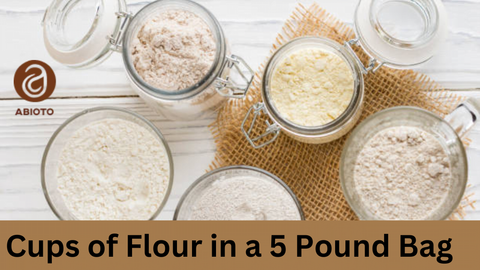Mold is a common issue that can arise when cultivating homemade sourdough bread starter. While mold can be harmful to consume, it is not always a cause for concern. In fact, some molds can be beneficial to the
homemade sourdough bread starter's flavor and texture. Homemade sourdough bread starter is made by mixing flour and water and allowing it to ferment over time. The mixture is then fed regularly to maintain the growth of lactic acid bacteria and wild yeast. However, the open-air nature of Homemade sourdough bread starter can also result in the growth of mold.
While mold can be unsightly and potentially harmful, it is important to note that not all molds are toxic. Some molds, such as those found in blue cheese, are intentionally added for their unique flavor. However, it is important to properly identify the type of mold growing in the sourdough starter to determine if it is safe to consume.
Understanding Mold in Sourdough Starter
Identifying Mold
Mold in sourdough starter can be identified by its black or fuzzy growth on the surface of the starter. Mold growth can also be identified by the presence of a sour or unpleasant odor. It is important to note that not all blackish or fuzzy growths in sourdough starter are mold. Kahm yeast, a harmless yeast that can appear in sourdough starter, can also look similar to mold.
Causes of Mold Growth
Mold growth in sourdough starter can be caused by a variety of factors. One of the most common causes is a contaminated container. If the container used to store the starter is not properly cleaned or sanitized, mold spores can easily grow and thrive. Another cause of mold growth is an environment that is too warm or humid. Mold spores can easily grow and spread in warm and humid environments.
Types of Mold
There are many types of mold that can grow in sourdough starter. Some common types include Aspergillus, Penicillium, and Cladosporium. It is important to note that not all mold is harmful, but some can produce harmful toxins that can cause health problems if ingested.
To prevent mold growth in sourdough starter, it is important to keep the container clean and sanitized, and to store the starter in a cool and dry environment. If mold does appear in the sourdough starter, it is best to discard the entire batch and start over with a fresh starter.
Effects of Neglecting Sourdough Starter
Neglecting your sourdough starter can have several negative effects on its health and performance. A neglected starter can become weak and produce subpar bread with a poor rise and flavor. Here are some of the effects of neglecting your sourdough starter:
-
Hooch formation: Neglecting your starter can cause it to produce a layer of liquid on top, called hooch. This is a sign that your starter is hungry and needs to be fed. If left unaddressed, the hooch can cause the starter to become too acidic and weaken it.
-
Bad sourdough starter: Neglected starters can develop off-flavors and odors, making them unsuitable for baking bread. A bad starter can have a strong, unpleasant smell and produce bread with a sour taste that is not desirable.
-
Weakened starter: A neglected starter can become weakened and lose its ability to rise bread properly. This is because the yeast and bacteria in the starter need to be fed regularly to maintain their strength and activity.
-
Young starter: Neglecting your starter can prevent it from maturing properly. A young starter may not have developed enough yeast and bacteria to produce good bread, resulting in a weak rise and poor flavor.
-
Dehydrated starter: If you neglect your starter for too long, it can become dehydrated and die. This can happen if the starter is not fed regularly or if it is stored in a dry environment.
To avoid these negative effects, it is important to maintain a regular feeding schedule for your sourdough starter and keep it in a healthy, active state. If you do neglect your starter, you may be able to revive it by feeding it regularly and discarding any discolored or off-smelling portions.
Preventing Mold in Sourdough Starter
Sourdough starter is a living organism that requires proper care and attention to thrive. One of the biggest challenges in maintaining a healthy sourdough starter is preventing mold growth. Mold can quickly contaminate your starter and ruin your bread. In this section, we will discuss some simple steps you can take to prevent mold growth in your sourdough starter.
Proper Feeding and Maintenance
Feeding your sourdough starter regularly is essential to keep it healthy and active. A well-fed starter is less likely to develop mold. It is recommended to feed your starter once a day or every 12 hours. When feeding your starter, discard half of the starter and replace it with fresh flour and water. This process will help maintain the consistency of your starter and remove any potential contaminants.
Choosing the Right Ingredients and Tools
Choosing the right ingredients and tools can also help prevent mold growth in your sourdough starter. Use high-quality flour and filtered water to feed your starter. Avoid using tap water, which may contain chlorine or other contaminants that can harm the good bacteria in your starter. When mixing your starter, use a clean surface and utensils. It is also recommended to use stainless steel tools instead of wooden ones, which can harbor bacteria.
Optimal Storage Conditions
Storing your sourdough starter in the right conditions can also help prevent mold growth. Keep your starter in a clean, airtight container in a cool, dry place. Avoid exposing your starter to heat or direct sunlight, which can promote mold growth. It is also recommended to avoid storing your starter in a humid environment, which can encourage mold growth.
In summary, preventing mold growth in your sourdough starter requires proper feeding and maintenance, choosing the right ingredients and tools, and storing your starter in optimal conditions. By following these simple steps, you can maintain a healthy and active sourdough starter and enjoy delicious bread for years to come.
Dealing with Moldy Sourdough Starter
Recognizing and Discarding Contaminated Starter
Moldy sourdough starter is a common problem that can occur due to various reasons such as improper feeding, temperature, and humidity. The presence of mold in your sourdough starter can be identified by brown or orange streaks, gray spots, or an unpleasant smell. If you notice any of these signs, it is essential to discard the contaminated starter immediately to prevent the spread of bad bacteria.
To discard the contaminated starter, throw out any visible mold and a portion of the starter around it. Then, strain the remaining starter through a fine-mesh sieve to remove any intruders or fly that may have entered. Finally, wash and sterilize all the tools and containers used for the starter.
Cleaning and Sterilizing Tools and Containers
Cleaning and sterilizing your tools and containers are essential to prevent the growth of mold and other harmful bacteria. After discarding the contaminated starter, wash all the tools and containers with hot, soapy water and rinse thoroughly. Then, sterilize them in boiling water for at least 10 minutes. Alternatively, you can use a solution of one-part vinegar to three parts water to sterilize the tools and containers.
Starting a New Batch of Sourdough Starter
Once you have discarded the contaminated starter and sterilized all the tools and containers, you can start a new batch of
sourdough starter. To do this, mix equal parts of flour and water in a clean and sterilized container. Cover the container with a cloth and let it sit at room temperature for 24 hours. After 24 hours, discard half of the mixture and feed the remaining mixture with equal parts of flour and water. Repeat this process for the next few days until you have a mature sourdough starter.
If you have any questions about sourdough starter feeding or reviving sourdough starter, refer to reliable sources or consult with a knowledgeable baker.
Remember, the key to preventing mold in your sourdough starter is to maintain proper feeding, temperature, and humidity. By following the steps outlined above, you can safely and confidently recover from a moldy sourdough starter and start a new batch.


Comments (0)
There are no comments for this article. Be the first one to leave a message!